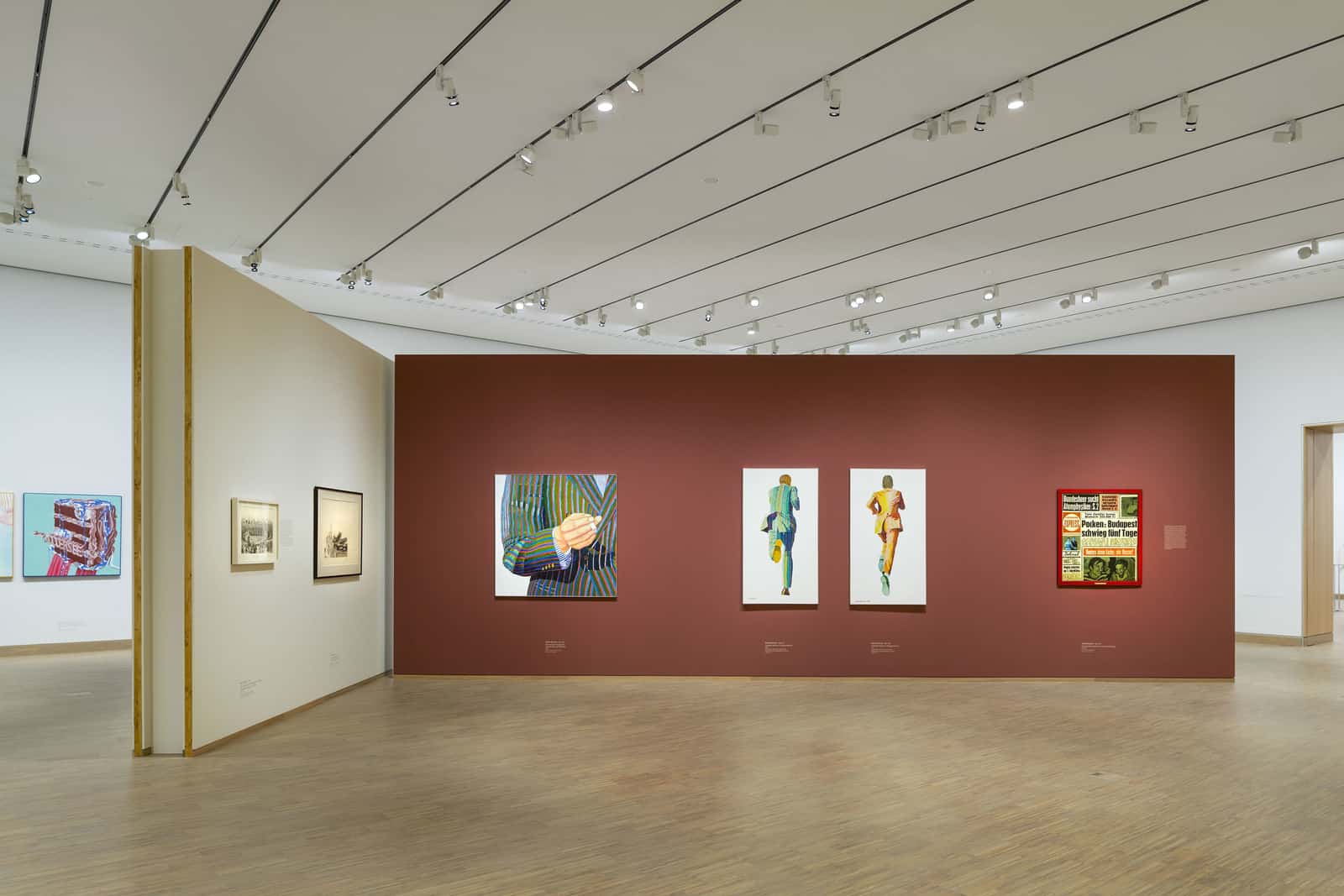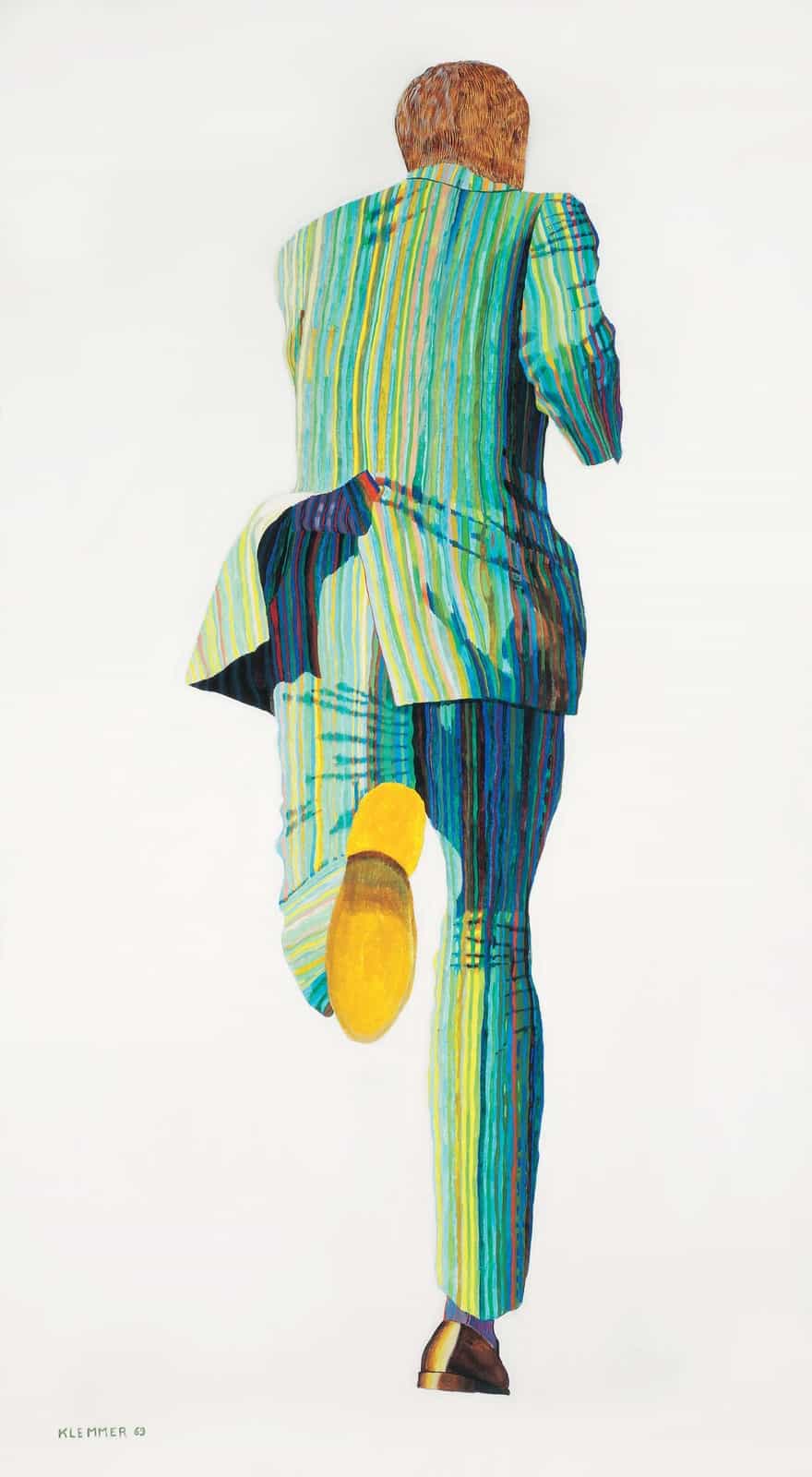The current exhibition at the ALBERTINA MODERN, entitled “The Beginning. Art in Austria, 1945 to 1980”, offers the first-ever comprehensive overview of a period that numbers among Austrian art history’s most innovative. The Beginning presents the most important artistic stances situated at the threshold of postmodernism—from the Vienna School of Fantastic Realism to early abstraction, Viennese Actionism, kinetic and concrete art, Austria’s own version of pop art, and the socially critical realism so characteristic of Vienna.

the ALBERTINA MODERN, “The Beginning. Art in Austria, 1945 to 1980” exhibition
The artists of this historical period have in common their radical opposition to authority and hierarchy, their critical stance towards the denial and repression of guilt for past misdeeds, and the uncompromising rejection of a reactionary notion of art that continued to represent the dominant ideal in Austria long after 1945.
The horrific images in the early works by Ernst Fuchs, Anton Lehmden, and Rudolf Hausner represented a violation of this ideal. The Viennese Actionists from Otto Mühl to Günter Brus made frequent allusions to it, while the abstract painters Wolfgang Hollegha and Markus Prachensky opposed it in their paintings. The socially critical realists from Alfred Hrdlicka to Reimo Wukounig and on to Gottfried Helnwein likewise execrated the prevailing norm, while Vienna’s art brut vanguard from Franz Ringel to Peter Pongratz made fun of it.
Another group of artists who fought against Austria’s reactionary postwar paradigm were those women who, beginning in the late 1960s, took gender conflict as the starting point for their rebellious works. Actionist VALIE EXPORT and the later feminist avant garde from Renate Bertlmann and Friederike Pezold to Birgit Jürgenssen and Karin Mack were more than just fed up with being represented and portrayed by men: they also took a stand against an ideal of masculinity that was still defined by the gender roles, dictates, and taboos of Austrofascism and the Third Reich.

the ALBERTINA MODERN, “The Beginning. Art in Austria, 1945 to 1980” exhibitionThisp resentation thus highlights a transitional period between eras that extended beyond the Allied occupation and only gave way to a truly new and different chapter of art history during the 1980s. And in 2021, a major exhibition at ALBERTINA MODERN entitled The Eighties will place this subsequent chapter in focus.
The Beginning accords the towering, singular figures of Friedensreich Hundertwasser, Arnulf Rainer, and Maria Lassnig their own separate rooms. And just what sculpture and object art were capable of during this period becomes clear in masterpieces by
artists ranging from Joannis Avramidis and Rudolf Hoflehner to Wander Bertoni and Roland Goeschl and on to Curt Stenvert, Bruno Gironcoli, and Cornelius Kolig.
The opening exhibition of ALBERTINA MODERN presents works by a total of 74 artists from this almost thirty-year period at the threshold of postmodernism. And both the way in which these works grapple with the Austrofascist state and National Socialism and the international networking engaged in by virtually all of their creators represent characteristics of these Viennese avant-gardes that have often been overlooked in the past.
This exhibition is based on the holdings of the ALBERTINA Museum, which have now been greatly enriched by the ALBERTINA’s acquisition of the Essl Collection. But an exhibition project of this ambition and magnitude, with its approximately 360 objects, also depends on the support of numerous lenders: artists, private collectors, and museums.
The development of this exhibition’s concept and the selection of the artworks to be shown—which include paintings, sculptures, objects, drawings, videos, photographs, and installations—were undertaken by an exhibition team headed by ALBERTINA Director General Prof. Dr. Klaus Albrecht Schröder and furthermore including Dr. Brigitte Borchhardt-Birbaumer, Dr. Elisabeth Dutz, Dr. Berthold Ecker, Dr. Antonia Hoerschelmann, and Dr. Angela Stief. The extensive exhibition catalog includes contributions by the members of this curatorial team as well as by further authors.
[Press information]

Robert Klemmer, the ALBERTINA MODERN, “The Beginning. Art in Austria, 1945 to 1980” exhibition
Duration 27 May until 8 November 2020
Venue ALBERTINA MODERN, Ground floor and Basement floor
Curators Prof. Dr. Klaus Albrecht Schröder, Director General ALBERTINA
Hungry for more?














